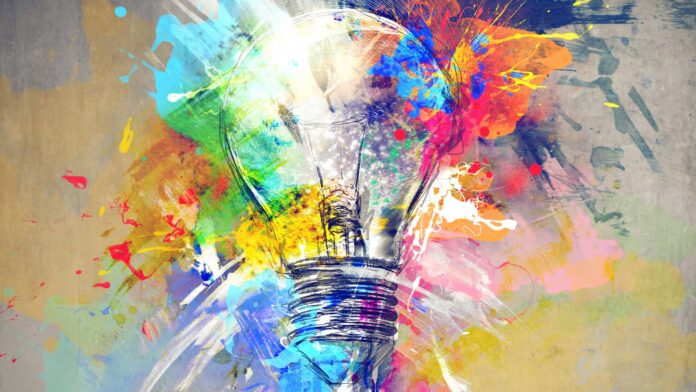The creative process of designing a logo is a lot of fun because it’s exciting to think about the effect that logo will have on your business objectives. And it’s enjoyable to see your company’s brand identity visually realized. Before you jump into designing it, though, you need to make important decisions about your branding strategy and objectives for the logo itself.
What are the various types of logos?
These are the five types of logos. There is a wordmark that compromises a standalone word or words like FedEx or Coca-Cola. The letter mark that contains only one letter or an abbreviation: Think of the two C’s for Chanel or the A for Adobe. Then there is a logo mark that contains a symbol only: Think the Nike swoosh or the apple for Mac products.
What makes a good logo?
A good logo is one that aligns and feels appropriate to your industry or service. If you’re a professional services business (vs. a product) usually simpler is better. We often design wordmarks or typographical logos for clients b/c that is all they really need.
Why does your business need a logo?
A well-designed logo builds trust by validating your professionalism and gets people to stick around. It tells potential clients who you are, what you do, and how that benefits them. It communicates to people with no prior knowledge or experience with your business that you do great work. If your logo looks unprofessional, people will undoubtedly question how well you’re able to deliver your products and services. Have you ever hit the back button or chosen one company over another simply because they look more legit? People make snap judgments and poor design makes people leave.
How do you create a good logo?
To create a great logo for your business, you need to find designers who know what they’re talking about. That’s why we created this guide.
You can call Al-Imran Akanda. He is an expert logo and branding designer. In this sector, he has been providing services and advice on various aspects of graphic design for over 5 years.
Pick colors wisely
When considering colors for your logo, there are a few things you should know. Color is a powerful communication tool and can be used to signal action, influence mood, and even influence physiological reactions. Certain colors have been shown to increase blood pressure, increase metabolism, and cause eyestrain.
Color increases brand recognition by up to 80%. It is the first thing people notice about a logo when seeing it for the first time. The color of your logo will determine how it is perceived and has the power to drive purchasing decisions. Color triggers emotions and gives meaning. And when used consistently across your marketing, color improves brand recognition by up to 80%.
The right colors depend on your industry and target market. You probably noticed that certain industries stick with certain colors. For example, financial institutions tend to use blues because blue communicates security and reliability. Brands use blue to promote trust in their products and services.
The most powerful brands stick to a simple color palette of less than three main colors. They also use solid colors rather than gradients. Keep in mind color looks different on screen and in print. Make sure you can reproduce your colors accurately (Pantone, CMYK, RGB, Hex).
Choose typography that represents your values
When it comes to design, typography is one of the most important areas. Your choice of typography for your brand and company is an essential component that can make or break design projects. I’m not just talking about how to choose fonts and typefaces, but also how to use them correctly.
Creating a logo and brand is as important as the use of color, images, or graphics in choosing typefaces and how they are arranged. Why? Because people associate the way a word looks with what a word actually says to determine how they feel.
Strong branding provokes emotional connection. You want your typography to strike interest, promote trust, and encourage optimism. Typography is a way to stir up such feelings without people even being actively aware of it.
Typography is used to communicate the tone of voice and personality. Pick typography that reflects what your company stands for—whether it’s elegant, traditional, whimsical, modern.
Similar to furniture, typography should be aesthetically pleasing and functional at the same time. Your choice of typography matters because it impacts user experience.
Use a simple iconic element
The best brand names use words or acronyms that create an image in someone’s mind using typography. The same can be done with graphic elements, symbols, and icons. A visual element adds interest and makes your logo memorable. It has to grab the attention of a consumer for 10 seconds to they can memorize it and form an opinion about it. Some designers create icons that can be used on their own in certain situations by modifying text or adding an illustrated icon. Make sure all the artwork is original and not from clip art. Over time and with consistent use, a visual association will develop.
These are examples of brands that have used images:
BMW uses a stylized propeller blade to convey what they do without spelling it out. The image also suggests speed and motion.
Apple uses an apple to suggest a piece of fruit, but also something else that is round and healthy-looking. If you add the bitten chunk removed from the apple, it becomes obvious that it is a reference to Adam and Eve’s Fall from Grace in Eden, which gives the brand more personality than if they had simply used the word “apple” in their logo design.
Conclusion
Good design matters and you do need it! Especially if you want people to take you seriously. When you invest in your branding, you empower your small business to succeed.



